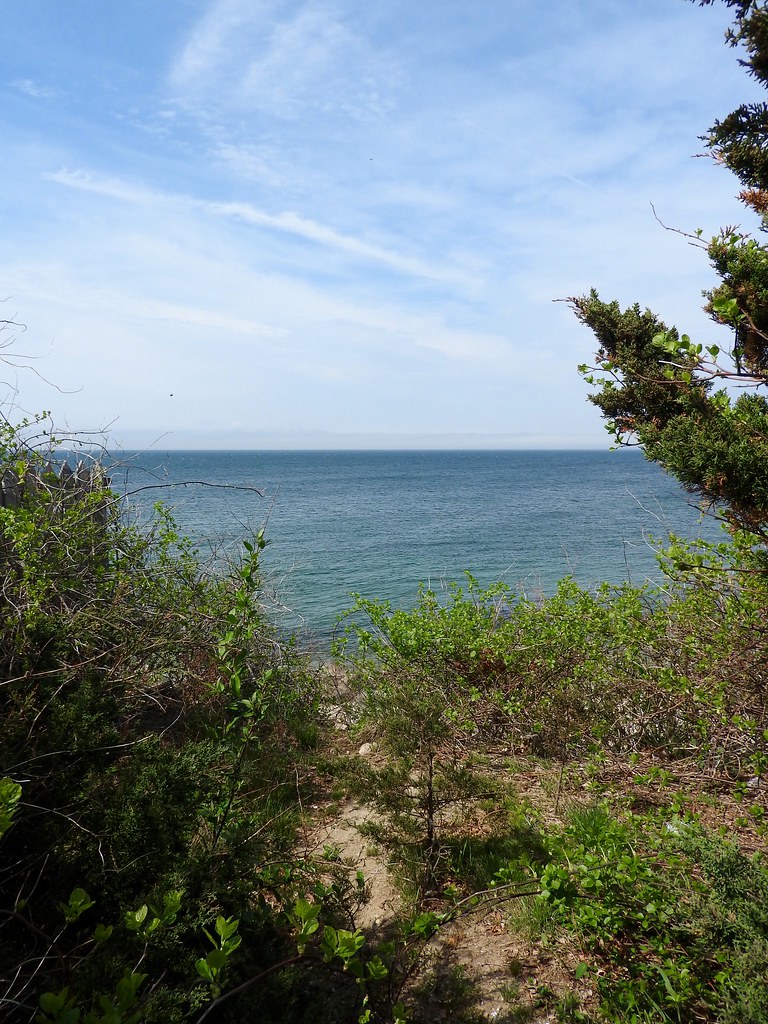It seemed like I was on the road just yesterday and here I was back out in the wilds once again. This time my wife and I were celebrating a round-numbered wedding anniversary so we headed up to coastal Massachusetts and Rhode Island. I’d been to Boston many times before, however I’d never traveled along the horseshoe of Cap Cod nor to the islands offshore nor to much of Rhode Island other than the Interstate highways running across it on the way to other places for that matter.
Let’s begin another Twelve Mile Circle multiple-article travelogue by focusing on the seacoasts that approximated my route and then move on to other topics in later installments.
Hull

We flew into Boston and drove down to the South Shore community of Hull (map). This was one of the oldest towns in Massachusetts, founded in 1622 as a an outpost for the Plymouth Colony to trade with local native American tribes. I captured this image from Fort Revere Park, a place that served as a military garrison protecting Boston Harbor beginning with the Revolutionary War and lasting all the way through World War II. It seemed so quintessentially New England.
Plymouth

Plymouth was a must. Twelve Mile Circle often delves into history so I simply couldn’t skip this most hallowed of New England locations. The site fell along our route and I’d never been there before. I’ll talk all about the Pilgrim connection in a future installment. I’m fixated on seacoasts for the moment so I’ll stick with those.
Plymouth had an awesome breakwater to protect its harbor which I guessed stretched about a half-mile (map). Naturally I had to walk to the very end of it along irregularly spaced granite blocks because that’s what one does when encountering a breakwater. There wasn’t anything particularly remarkable to be found at the end although that was hardly the point.
The U.S. Army Corps of Engineers described it as:
“A 3,500-foot-long stone breakwater. This structure begins at a point north of the town wharf and extends easterly from the shore for 1,400 feet, then turns southeasterly, parallel to the waterfront, for 2,100 feet.”
My rough estimate of distance seemed to be pretty close to the mark.
Cape Cod

Then we proceeded out along Cape Cod, eventually making it all the way to the tip at Provincetown (map). Much of the shoreline was protected within Cape Cod National Seashore. The cape was created by glaciers as noted by the U.S. Geological Survey.
“The geologic history of Cape Cod mostly involves the advance and retreat of the last continental ice sheet (named the Laurentide after the Laurentian region of Canada where it first formed) and the rise in sea level that followed the retreat of the ice sheet. On Cape Cod, these events occurred within the last 25,000 years… Sometime after 23,000 years ago, the glacier reached its maximum advance… The ice sheet was characterized by lobes that occupied large basins in the bedrock surface. These lobes were responsible for the location and overall shape of Cape Cod and the islands.”
It also created awesome sandy cliffs and dunes, and amazing beaches.
Nantucket

I’m sure Nantucket had some incredible ocean vistas (map). However most of our stay on the island coincided with the arrival of an oppressively thick fog. The bank seemed to sit directly atop Nantucket, permanently affixed, perfectly clear on the ferryboat ride out to the island and perfectly clear once we left. Nantucket had been dubbed the Gray Lady by mariners of yore because of the fog that often shrouded the island. We experienced the Gray Lady in all of her glory. That was fine, actually. It created a mysterious almost haunting atmosphere as we explored weathered cobblestone streets.
Martha’s Vineyard

Martha’s Vineyard (map) offered considerably more sunshine to the point where it was downright hot during our brief visit at least for most of the island. The far western edge with its spectacular cliffs was enveloped by clouds and a bitterly cold wind, so oddly disconnected with conditions found elsewhere on the island given the small geographic distance. Those photos didn’t turn out well although there were still plenty of sunny scenes like the one I selected.
It was also nice to visit a place with an officially recognized possessive apostrophe.
Newport

We finished our whirlwind tour in Newport, Rhode Island (map). The best coastline in town appeared along its famed Cliff Walk. This path was established as a National Recreation Trail, open to the public. Awesome scenes of ocean waves crashing on rocks far down below the cliff framed one side of the trail. Unbelievably huge mansions lined the other side. These homes were constructed primarily during the Guilded Age of the late 19th Century by some of the biggest names of legendary fortunes like Vanderbilt and Astor. Many of these American castles can be toured today as museums.

Leave a Reply